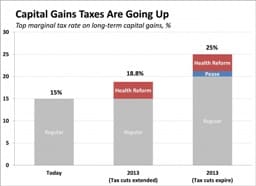 Current Financial position and historical records are the major factors in putting a value on a business. Last week the focus came down to trust issues around the financials. This week we’ll focus on the numbers.
Current Financial position and historical records are the major factors in putting a value on a business. Last week the focus came down to trust issues around the financials. This week we’ll focus on the numbers.
Definition of Cash Flow: owner salary, net profit, depreciation, interest expense, and discretionary expenses not necessary for continuing operations
As mentioned in last week’s blog, the typical business advisor (accountant, financial planner, attorney, banker, business coach, etc.) needs to understand the existing situation and historical information to unlock some mysteries in the business. What are the trends, opportunities, threats? Solid financial information should lead to solid advice.
When selling a business, the marketplace puts a value on the cash flow of the business. Have the cash flows been steady, increasing, or decreasing? Are the cash flows readily apparent in the financial statements? Is the cash flow expected to continue or are there major changes expected? A buyer needs to understand the cash flow in order to make a good offer on a business. That offer takes the following into consideration:
1. Return on the buyer’s initial investment (paying the new owner’s salary),
2. Cash to pay off debt for the acquisition, and
3. Retaining cash in the business to support operations.
A business that shows a cash flow of $100,000 may be able to achieve a market value of 2 or 3 times that amount. Let’s say the value is $300,000 (3x $100,000). Last week I used an example of someone sending a family of 15 on a European vacation. Let’s say that the tax deduction used for that vacation was $25,000, and the tax savings was approximately $7,500. It feels good to save $7,500 on taxes; however, the value of the business went down considerably more than that. A $25,000 expense translates into lost business value of 3 x $25,000, or $75,000!
Sure, there is negotiation, and this is just a simple situation that should be easy to explain to the buyer and the bank. It does illustrate a point, however, that some simple tax dodges to save a few bucks will certainly make a much larger reduction in business value.
Talk to one of our Apex Business Advisors to help you plan and improve the value of your business before it is time to sell.

 Buy Low – Sell High: This practice makes sense with investments and it makes sense when thinking of your business value. If you started the business from scratch, hopefully it has been built up to a profitable venture and you have plenty of equity. If you bought a business and have increased it revenue and profitability, most likely you have increased the overall value of the business (as you have read in past blogs, there are other variables to consider).
Buy Low – Sell High: This practice makes sense with investments and it makes sense when thinking of your business value. If you started the business from scratch, hopefully it has been built up to a profitable venture and you have plenty of equity. If you bought a business and have increased it revenue and profitability, most likely you have increased the overall value of the business (as you have read in past blogs, there are other variables to consider). Some of the sellers we have worked with have the approach that “it’s all or nothing. You WANT my business, you SHOULD want my business and I don’t NEED to negotiate.” Yikes!
Some of the sellers we have worked with have the approach that “it’s all or nothing. You WANT my business, you SHOULD want my business and I don’t NEED to negotiate.” Yikes! Current Financial position and historical records are the major factors in putting a value on a business. Last week the focus came down to trust issues around the financials. This week we’ll focus on the numbers.
Current Financial position and historical records are the major factors in putting a value on a business. Last week the focus came down to trust issues around the financials. This week we’ll focus on the numbers. One of the biggest struggles we have with our entrepreneur clients is that they have lousy financial statements. Many times it’s from lack of caring and know-how, but sometimes it’s done intentionally.
One of the biggest struggles we have with our entrepreneur clients is that they have lousy financial statements. Many times it’s from lack of caring and know-how, but sometimes it’s done intentionally. Over the next several weeks you will read about keys to business value. These are some basic drivers that will make your business or the business you are pursuing, more (or less) valuable. We are talking about the attractiveness to a potential buyer in an open market. Disclaimer: There are lots of different things that can impact the value of a business – and we won’t cover them all.
Over the next several weeks you will read about keys to business value. These are some basic drivers that will make your business or the business you are pursuing, more (or less) valuable. We are talking about the attractiveness to a potential buyer in an open market. Disclaimer: There are lots of different things that can impact the value of a business – and we won’t cover them all. We spent the better part of 2009 and 2010 trying to chase bankers who were not returning phone calls. There were many banks changing hands and were not able to pursue loans for business acquisitions. Over the last year, we have witnessed banks being more “aggressive” in seeking business clients. They have money that they need to loan and they are looking to Apex for deals to fund. Bankers are not throwing money around, and they are still conservative. However, they need to make loans to be profitable.
We spent the better part of 2009 and 2010 trying to chase bankers who were not returning phone calls. There were many banks changing hands and were not able to pursue loans for business acquisitions. Over the last year, we have witnessed banks being more “aggressive” in seeking business clients. They have money that they need to loan and they are looking to Apex for deals to fund. Bankers are not throwing money around, and they are still conservative. However, they need to make loans to be profitable. We enjoy sharing success stories about the buyers and sellers that we work with. We had a business owner with a technology based company that wanted to sell. They were asking $950K for the business based on the current revenue stream. (This was all happening in the middle of 2011.) Potential investors were concerned that the core technology might be outdated, so they kept passing on the opportunity.
We enjoy sharing success stories about the buyers and sellers that we work with. We had a business owner with a technology based company that wanted to sell. They were asking $950K for the business based on the current revenue stream. (This was all happening in the middle of 2011.) Potential investors were concerned that the core technology might be outdated, so they kept passing on the opportunity. Capital gains taxes will be going up from 15% to potentially 25% in 2013. If you are doing a deal that is valued at $1M, that can make a big difference in what you are able to put in the bank after selling your business to the tune of $100K. If you are close to retirement or thinking about selling your business, you should move aggressively to prepare your business. You will realize a substantial savings if you close by December 31st of 2012.
Capital gains taxes will be going up from 15% to potentially 25% in 2013. If you are doing a deal that is valued at $1M, that can make a big difference in what you are able to put in the bank after selling your business to the tune of $100K. If you are close to retirement or thinking about selling your business, you should move aggressively to prepare your business. You will realize a substantial savings if you close by December 31st of 2012.
